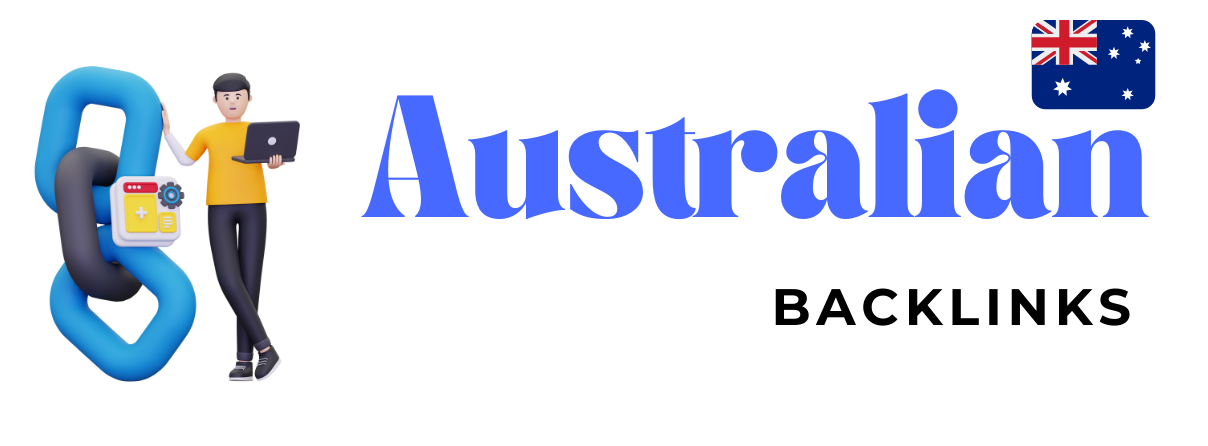Introduction
Backlinks remain one of the most influential factors in SEO. But in today’s hyper-competitive environment, blindly building links is inefficient. Instead, the most successful SEO professionals look for data-driven opportunities — places where their competitors are already earning links, but they aren’t.
This is where link intersections come in. By analyzing which websites link to multiple competitors but not to your own site, you can uncover high-probability backlink opportunities. And thanks to powerful SEO tools like Ahrefs and SEMrush, this process is not only possible but incredibly efficient.

In this guide, we’ll explore how to use these two industry-leading tools to find link intersections, starting with Ahrefs.
Why Link Intersections Matter in SEO
Before diving into the “how,” it’s important to understand the “why.”
What Are Link Intersections?
A link intersection occurs when a website links to two or more of your competitors but not to you. These sites represent prime backlink prospects because:
- They already link to similar content in your industry.
- They’ve shown willingness to link to multiple sources.
- They may be unaware of your brand or your resources.
Why They’re Valuable
- Higher success rates: Outreach is easier since the site already links to others in your niche.
- Competitive insights: You see where competitors are earning links and identify missed opportunities.
- SEO impact: Backlinks from relevant, authoritative domains directly improve rankings and organic visibility.
In short, link intersections are like a map of untapped opportunities for your backlink strategy.
Why Use Ahrefs or SEMrush for Link Intersections?
While it’s technically possible to find link overlaps manually using Google operators and spreadsheets, the process is tedious and limited. Tools like Ahrefs and SEMrush make it far more efficient by:
- Crawling billions of web pages to build massive backlink databases.
- Automating competitor comparisons.
- Providing filters for authority, traffic, and relevance.
- Exporting results for deeper analysis.
Both tools are leaders in the SEO space, but each has its own unique approach to link intersections.
Finding Link Intersections with Ahrefs
Ahrefs is widely regarded as one of the most robust backlink analysis tools. Its Link Intersect tool is built specifically for this purpose.
Step 1: Access the Link Intersect Tool
- Log into your Ahrefs account.
- Navigate to More → Link Intersect (found under “SEO Tools”).
Step 2: Enter Competitor Domains
- Add up to 10 competitor domains or subdomains.
- Enter your own domain in the “But doesn’t link to” field.
Example:
- Competitors:
competitor1.com,competitor2.com,competitor3.com. - Your domain:
yourwebsite.com.
Step 3: Analyze the Results
Ahrefs will display a list of referring domains that link to your competitors but not you. For each domain, you’ll see:
- The number of competitors they link to.
- The authority of the referring domain (Domain Rating).
- The number of backlinks.
- The last seen/verified date.
Step 4: Apply Filters
To refine your prospect list:
- Filter by Domain Rating (DR): Focus on DR 40+ for higher authority.
- Filter by Traffic: Ensure the linking domains have real organic traffic.
- Filter by Language or Country: Match your target audience.
Step 5: Identify Link Types
Check the context of competitor backlinks:
- Guest posts.
- Resource pages.
- Mentions in articles.
- Directory listings.
This gives you insight into the best outreach approach.
Step 6: Export and Organize
Export the results into a CSV or Google Sheet. Categorize opportunities by:
- Easy wins (e.g., directories).
- Medium effort (guest posts, mentions).
- High effort (partnerships, in-depth content).
Step 7: Begin Outreach
Craft personalized outreach emails referencing competitor mentions. Example:
“I noticed you’ve included [Competitor A] and [Competitor B] in your article on [Topic]. We recently published a resource that adds X new data points you might find valuable for your readers. Would you consider adding it as well?”
Benefits of Using Ahrefs for Link Intersections
- Depth of Data: One of the largest backlink indexes available.
- Ease of Use: Simple interface with powerful filters.
- Flexibility: Analyze up to 10 competitors simultaneously.
- Contextual Insights: View backlink types to tailor outreach.

Example Use Case
A SaaS company in the productivity niche ran a Link Intersect report with three competitors. They found 120 referring domains linking to at least two rivals but not to them. After outreach, they secured 15 new backlinks in under three months, boosting their domain rating and outranking competitors for several high-value keywords.
Common Pitfalls to Avoid in Ahrefs
- Chasing All Links Blindly: Not every competitor backlink is worth pursuing — some may come from spammy or irrelevant domains.
- Ignoring Context: Always review the actual page linking to competitors; don’t rely solely on metrics.
- Overloading Outreach: Quality beats quantity — prioritize realistic, high-value opportunities.
Finding Link Intersections with SEMrush
SEMrush is another powerhouse in the SEO toolkit. Its Backlink Gap Tool is purpose-built for competitor comparison and link intersection analysis.
Step 1: Access the Backlink Gap Tool
- Log in to SEMrush.
- From the left sidebar, go to Link Building → Backlink Gap.
Step 2: Enter Competitor Domains
- Add up to five competitor domains.
- Enter your own site in the first field.
- SEMrush will compare all entered domains side-by-side.
Example:
- Your domain:
yourwebsite.com. - Competitors:
competitor1.com,competitor2.com,competitor3.com,competitor4.com.
Step 3: Review the Venn Diagram
SEMrush visualizes the backlink overlap with a Venn diagram. This makes it easy to see which referring domains link to:
- All competitors.
- Multiple competitors.
- Just one.
Step 4: Apply Filters
SEMrush offers robust filters to refine results:
- Authority Score: SEMrush’s proprietary metric combining trust and influence.
- Referring Domains by Category: Filter by industries, like finance, education, or technology.
- New vs. Lost Backlinks: Spot recent opportunities your competitors are acquiring.
Step 5: Analyze Prospects
For each referring domain, SEMrush shows:
- The total backlinks given to competitors.
- Link type (text, image, form, frame).
- Anchor text used.
- Traffic estimates for the referring site.
Step 6: Export for Outreach
Export the refined list and organize prospects by priority:
- High authority editorial sites.
- Relevant blogs.
- Industry-specific directories.
Step 7: Launch Outreach
SEMrush integrates with its Link Building Tool, allowing you to send outreach emails directly within the platform. You can:
- Use pre-built templates.
- Track email opens and responses.
- Monitor acquired links.
Benefits of Using SEMrush for Link Intersections
- Visualization: Venn diagrams make it easy to spot overlap at a glance.
- Category Insights: Industry-specific filtering saves time.
- Integration: Outreach can be executed and tracked without leaving the platform.
- Trend Analysis: Monitor new/lost backlinks to stay ahead.

Example Use Case
A digital marketing agency used SEMrush’s Backlink Gap Tool to compare four competitors. They discovered 80 referring domains linking to at least three rivals but not them. By prioritizing education-related sites (their niche), they secured 12 new backlinks, which led to a 25% increase in organic leads over five months.
Advanced Tactics for Link Intersections
Once you master the basics, here’s how to take Link Intersect to the next level.
1. Combine with Content Gap Analysis
- Use SEMrush’s Content Gap tool alongside backlink gaps.
- Identify competitor content that attracts links.
- Create a more comprehensive version, then pitch it to the same linking domains.
2. Time-Sensitive Opportunities
- SEMrush’s “New vs. Lost Backlinks” filter highlights recently earned competitor links.
- Reach out quickly with an updated or alternative resource while the webmaster is still engaged.
3. Prioritize Outreach by Link Type
- Editorial backlinks > Directory links.
- Guest post mentions > Automated listings.
- Prioritize earned mentions over “easy but weak” links.
4. Leverage Intersection Depth
- Sites linking to 3+ competitors are more valuable than those linking to just one.
- This signals higher engagement with your industry and greater likelihood of linking to you.
5. Regional & Language Targeting
- Filter by country/language to uncover geo-specific backlinks.
- Ideal for international SEO campaigns.
Real-World Case Studies
Case Study 1: B2B SaaS Firm
Challenge: Struggling to outrank competitors in a crowded SaaS niche.
Solution: Used Ahrefs’ Link Intersect to identify 150 domains linking to competitors. Focused on high-DR industry blogs.
Result: Earned 20 backlinks in six months, improving rankings for 12 competitive keywords.
Case Study 2: E-Commerce Brand
Challenge: Competitors dominated “Best Product” lists.
Solution: Used SEMrush Backlink Gap to spot lifestyle blogs linking to 3+ competitors. Sent product samples and pitches.
Result: Secured inclusion in five new guides, increasing referral sales by 18%.
Case Study 3: Local Business (Real Estate)
Challenge: Limited online visibility vs. local competitors.
Solution: Combined Ahrefs and SEMrush to find local chambers of commerce and directories linking to rivals.
Result: Acquired 15 local backlinks, boosting Google Maps rankings and local traffic.
Common Pitfalls to Avoid
- Focusing Only on DR/Authority Scores
Authority is important, but relevance and traffic matter more. Don’t chase links from irrelevant but “strong” domains. - Copy-Paste Outreach
Webmasters see through generic templates. Always personalize. - Neglecting Competitor Context
Check why competitors got the link — was it for a guest post, product review, or resource page? Your outreach should mirror that context. - Quantity Over Quality
10 high-quality backlinks often outperform 100 low-value ones. - Failing to Track Progress
Use outreach CRMs or SEMrush’s Link Building Tool to monitor efforts.
Conclusion
The Link Intersect technique is one of the smartest, most efficient ways to uncover backlink opportunities in 2025.
- Ahrefs excels at depth and simplicity, making it easy to compare up to 10 competitors and filter by DR, traffic, and context.
- SEMrush shines in visualization, category insights, and integrated outreach workflows.

When combined, these tools give SEO professionals a clear roadmap to find missed opportunities, close backlink gaps, and overtake competitors in search rankings.
If backlinks are the “votes of trust” that fuel search visibility, link intersections are the fastest way to identify who’s voting for your competitors and persuade them to vote for you, too.
FAQs About Finding Link Intersections
1. What’s the difference between Ahrefs and SEMrush for link intersections?
Ahrefs offers deeper backlink data and allows up to 10 competitor comparisons, while SEMrush provides better visualization and integrates with outreach tools.
2. How many competitors should I analyze?
Start with 3–5 direct competitors for best results. Too few reduces overlap, too many may dilute the data.
3. How often should I run Link Intersect reports?
Quarterly is ideal — backlink profiles evolve, and new opportunities arise frequently.
4. Can small businesses use these tools effectively?
Yes. Even local businesses can find opportunities by analyzing competitors’ local directories, associations, and news mentions.
5. How long before I see results?
Typically 3–6 months after acquiring new backlinks, though early referral traffic may appear sooner.
6. Do I need both Ahrefs and SEMrush?
Not necessarily, but using both offers complementary strengths. Ahrefs provides raw backlink depth, while SEMrush helps with outreach and visualization.



